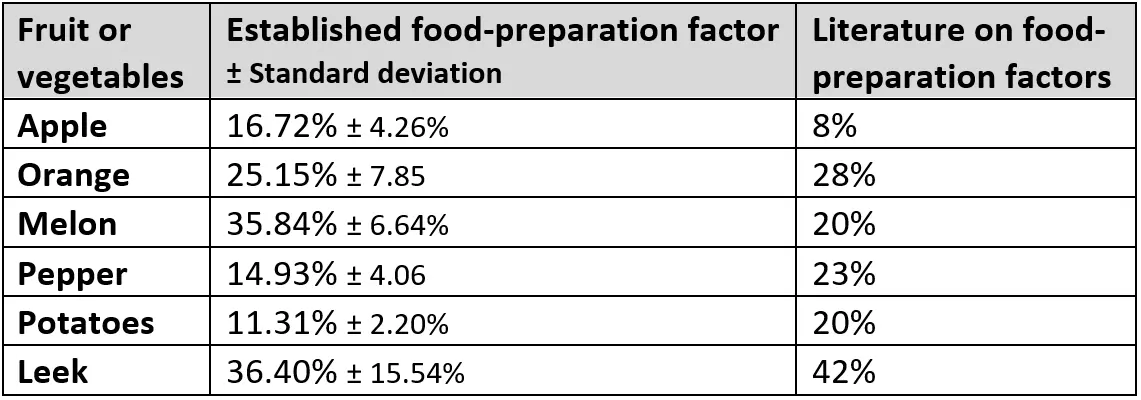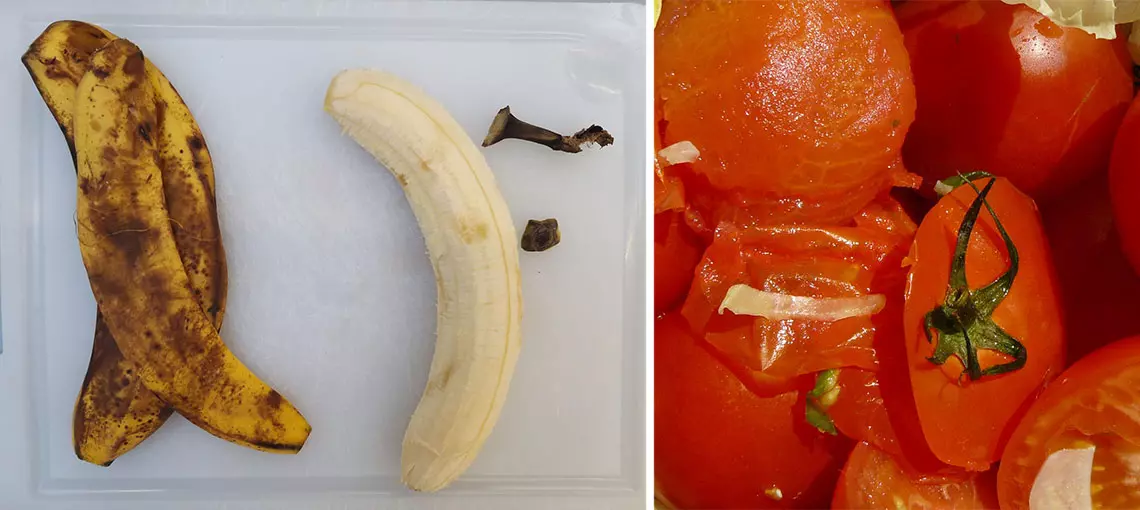Getting to the core of food waste: How much green waste is actually generated during the preparation of fruit and vegetables?
Nutrition is responsible for nearly a third of the total environmental impact that comes from Swiss consumption. Approximately one quarter of this amount is caused by food waste. The majority of this waste is produced by us (the consumers) at home. Even though much of the food-preparation waste is not classified as food waste, a great deal is edible and could be avoided by the more careful peeling of fruits and vegetables.
The literature in this field makes reference to so-called food-preparation factors that serve as guidelines for the parts of fruits and vegetables that are normally not consumed. Within the scope of the bachelor's thesis “Nutritional value-based characterisation of (partly) avoidable food waste,” food-preparation factors were determined for six chosen fruits and vegetables and were compared with values from other literature on this subject. The factors were identified with nine test subjects, who prepared the fruits and vegetables in their usual way. Afterwards, the food-preparation waste was weighed. The objective here was to provide an initial indication of the typical food-preparation behaviour of the Swiss population.
The results of the study are shown in the table, which includes calculations of the average values as well as the standard deviation of the nine test subjects. In some cases, there were not only large differences identified between the food-preparation factors of the test subjects (e.g. a range of 9%to 53% for leek), but also deviations from the values provided in other literature and the minimum food-preparation factors associated with more careful peeling. In the case of potatoes, for example, the subjects created, on average, 11.3% food-preparation waste. The food-preparation factor from other literature on this subject is considerably higher (20%), although measurements taken when the peelings were removed after cooking revealed that the potato peelings account for only 2% of the total mass of a potato. Through the careful separation of the inedible portions of fruits and vegetables, valuable biomass can be saved.
Careful peeling is therefore not only kind to your wallet, but also prevents unnecessary food waste.

